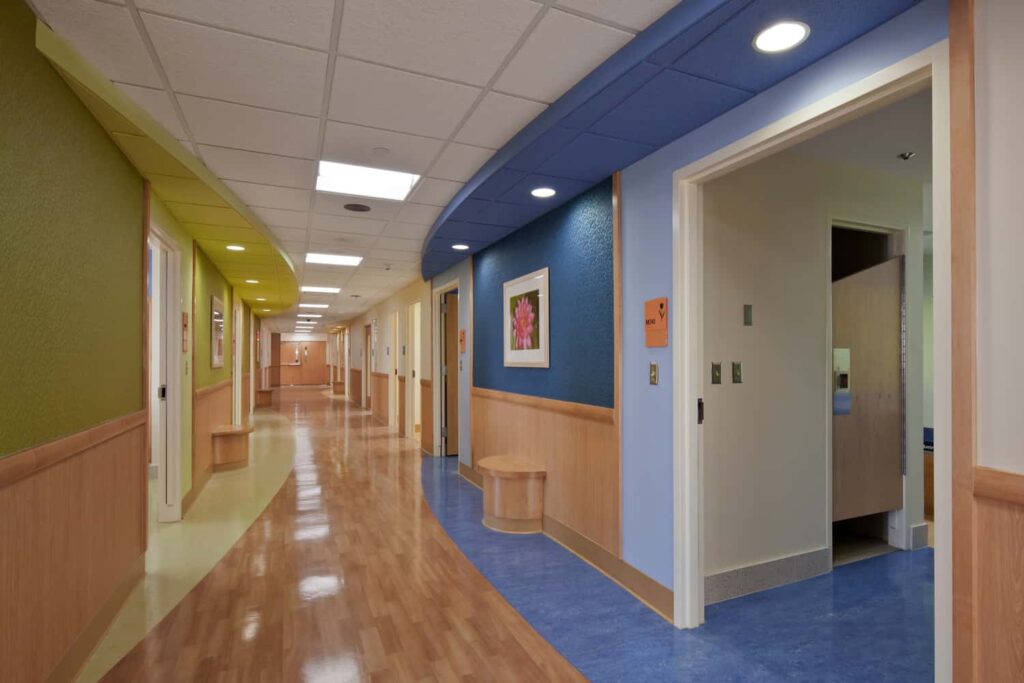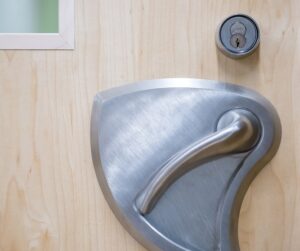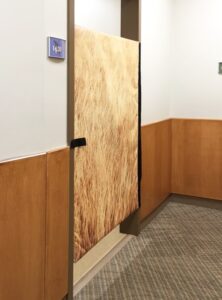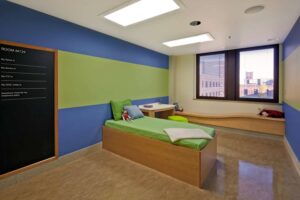In February 2017, the Center for Medicare and Medicaid Services (CMS) issued a directive to The Joint Commission requiring that hospital surveyors cite all potential ligature risks regardless of the size of the risk or patient acuity levels. The new directive lead to unrealistic expectations from surveyors.
As a result, many hospitals surveyed this year were cited for issues even though previous inspections may not have considered the same items a risk.
After months of discussions with the American Hospital Association (AHA), National Association of Psychiatric Health Systems (NAPHS), and other healthcare associations, CMS decided to reevaluate the approach to surveys for ligature risk. The Joint Commission assembled a panel including representatives from provider organizations, experts in behavioral design and suicide prevention, Joint Commission surveyors, and representatives from CMS.
On October 25, The Joint Commission issued a special report intended to provide guidance for providers and surveyors on potential hazards in healthcare settings. The following is a summary of those recommendations. To read the full report (Special Report: Suicide Prevention in Health Care Settings, 25 Oct. 2017).
Procedures/Policies
Healthcare organizations should do a risk assessment and prepare a mitigation plan. The expert panelists emphasized the critical importance of well-trained, vigilant, compassionate staff who, in their words, “rigorously” follow procedures for protecting patients.
The report suggests that facilities should focus as much on staff training and monitoring compliance with their policies and protocols as they do on identifying and correcting specific environmental hazards.
 Ligature-Resistant
Ligature-Resistant
The panel recommended the term “ligature-resistant” rather than the term “ligature-free” because they did not think it possible to remove all the potential ligature risks. The panel also defined the term ligature resistant: “Without points where a cord, rope, bedsheet, or other fabric/material can be looped or tied to create a sustainable point of attachment that may result in self-harm or loss of life.”
The following areas must be ligature-resistant:
- Patient rooms
- Patient bathrooms
- Corridors (see below)
- Common patient care areas
Corridors and Common Patient Care Areas
Areas that have an unobstructed view from the nurse station (so that a patient attempt at self-harm can be easily seen and interrupted) and areas behind self-closing/self-locking doors do not need to be ligature-resistant and will not be cited for ligature risks.
 Patient Toilet Room Doors
Patient Toilet Room Doors
The transition zone between patient rooms and patient bathrooms must be ligature-free or ligature-resistant. Feedback from several facilities is that this has been a frequently cited issue. The report suggests several examples of acceptable solutions that include removing the bathroom door, use of soft suicide prevention (foam) door, top-of-door alarm system, and using a specially engineered door with a sloped top. Another potential solution might be to lock the toilet room door denying access unless staff is present; this solution still requires the door and hardware be ligature-resistant in the closed arrangement.
Patient Room Doors to the Corridor
Doors between patient rooms and corridors must contain ligature-resistant hardware which includes, but may not be limited to, hinges, handles, and locking mechanisms. The expert panel recognized that there is some potential ligature risk at the top of doors but facilities are not required to have risk-mitigation devices installed at top of corridor doors to decrease the chance that doors will be used as a ligature attachment point. However, facilities should note this on their environmental risk assessments and describe their mitigation strategies (e.g., appropriate rounding/monitoring by staff, requiring that doors be left open during certain hours).
Ceilings
All patient rooms and bathrooms must have a solid ceiling. Drop (or lay-in) ceilings can be used in hallways and common patient care areas as long as all aspects of the corridor are fully visible to staff and there are no objects that patients could easily use to climb up to the drop ceiling, remove a panel, and gain access to ligature risk points in the space above the drop ceiling.
Drop ceilings in areas that are not fully visible to staff (for example, a right-angle curve of a corridor) or for which it is possible that patients could easily move objects to access the area above the drop ceiling should be noted on the risk assessment and have an appropriate mitigation plan. Mitigation strategies for existing drop ceilings in these areas might include using tile retention clips, installing motion sensors above the ceiling to sense tampering, or using another comparable harm-resistive arrangement.
Patient-Bed Type
The medical needs and a patients’ risk for suicide should be carefully assessed and balanced to determine the optimal type of patient bed required to meet both medical and psychiatric needs. Healthcare organizations must have appropriate mitigation plans and safety precautions for patients who require medical beds with ligature points.
Patient Toilets
The expert panelists concluded that standard toilet seats with a hinged seat and lid do not pose a significant risk for suicide attempts or self-harm. While some facilities have been cited for toilet seats over the past several months, this report suggests that this should not be cited during future surveys and facilities do not need to list this on their risk assessment.
The special report suggests that additional clarification will be provided at a later date for outpatient psychiatric and other acute care areas.











